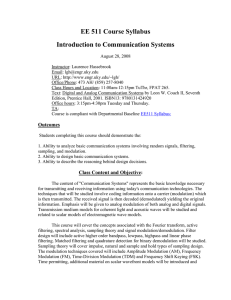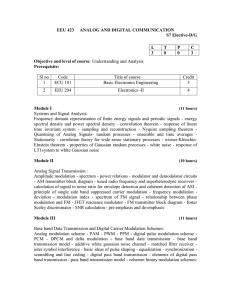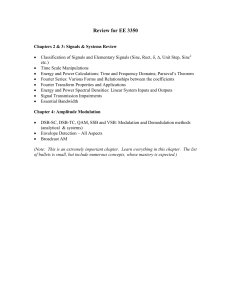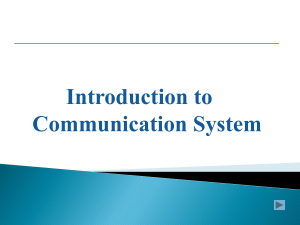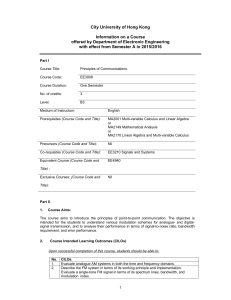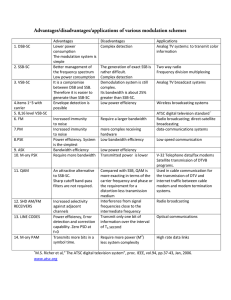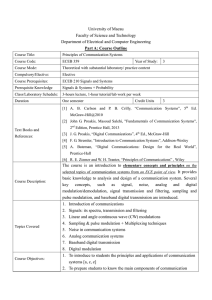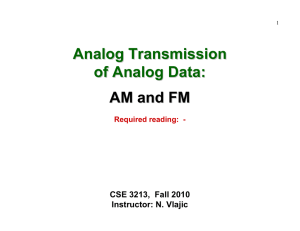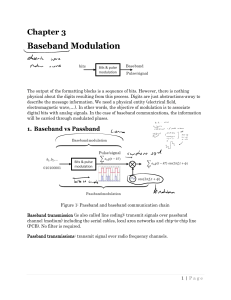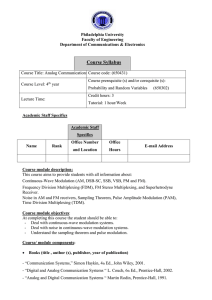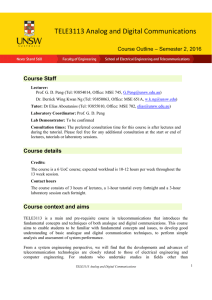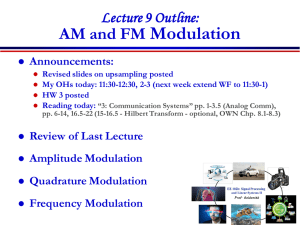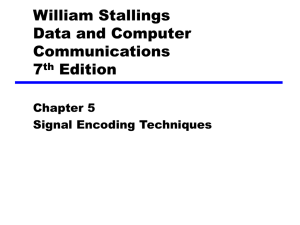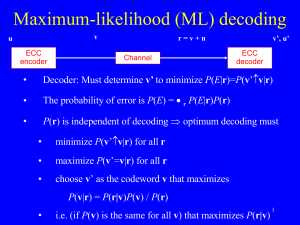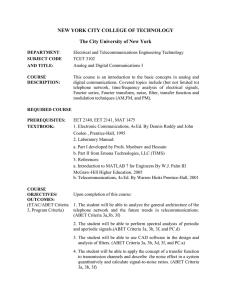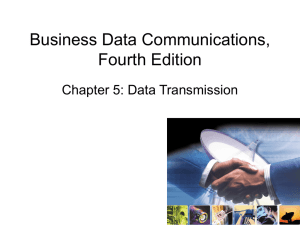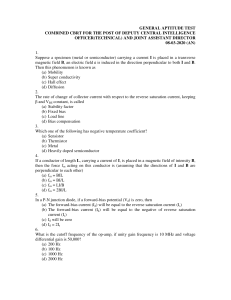Dr. Yazeed Qasaymeh
advertisement
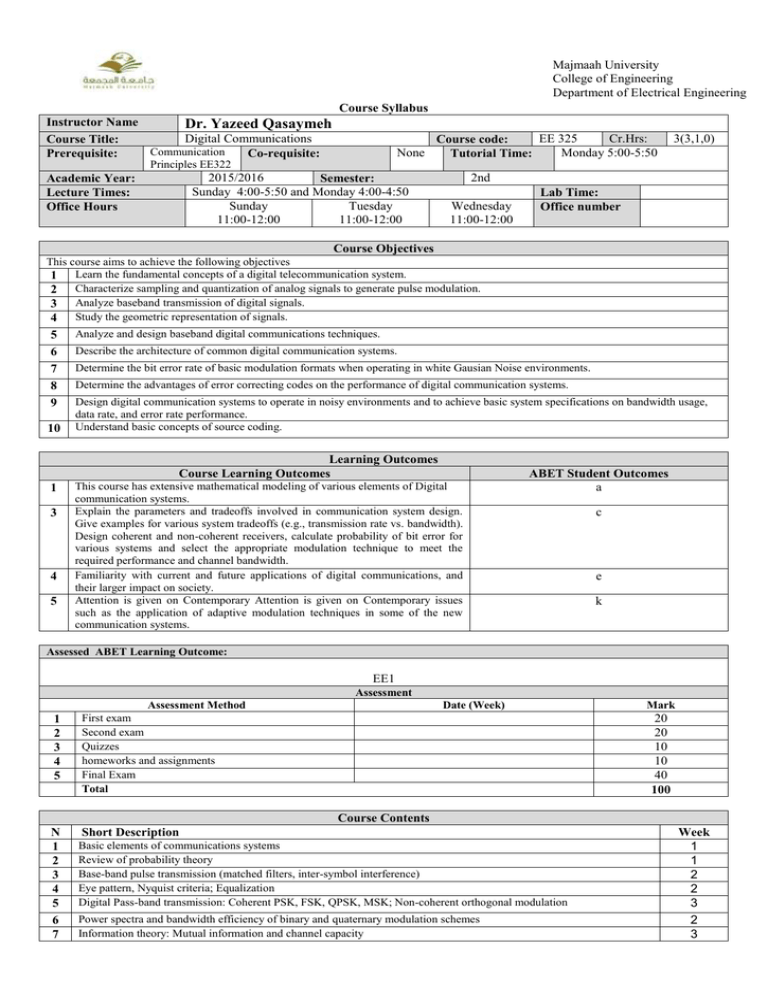
Majmaah University College of Engineering Department of Electrical Engineering Course Syllabus Instructor Name Dr. Yazeed Qasaymeh Digital Communications Course Title: Communication Prerequisite: Co-requisite: None EE 325 Cr.Hrs: Course code: Monday 5:00-5:50 Tutorial Time: 3(3,1,0) Principles EE322 2015/2016 Semester: Sunday 4:00-5:50 and Monday 4:00-4:50 Sunday Tuesday 11:00-12:00 11:00-12:00 Academic Year: Lecture Times: Office Hours 2nd Wednesday 11:00-12:00 Lab Time: Office number Course Objectives This course aims to achieve the following objectives 1 Learn the fundamental concepts of a digital telecommunication system. 2 Characterize sampling and quantization of analog signals to generate pulse modulation. 3 Analyze baseband transmission of digital signals. 4 Study the geometric representation of signals. 5 6 7 8 9 10 Analyze and design baseband digital communications techniques. Describe the architecture of common digital communication systems. Determine the bit error rate of basic modulation formats when operating in white Gausian Noise environments. Determine the advantages of error correcting codes on the performance of digital communication systems. Design digital communication systems to operate in noisy environments and to achieve basic system specifications on bandwidth usage, data rate, and error rate performance. Understand basic concepts of source coding. Learning Outcomes Course Learning Outcomes 1 3 4 5 This course has extensive mathematical modeling of various elements of Digital communication systems. Explain the parameters and tradeoffs involved in communication system design. Give examples for various system tradeoffs (e.g., transmission rate vs. bandwidth). Design coherent and non-coherent receivers, calculate probability of bit error for various systems and select the appropriate modulation technique to meet the required performance and channel bandwidth. Familiarity with current and future applications of digital communications, and their larger impact on society. Attention is given on Contemporary Attention is given on Contemporary issues such as the application of adaptive modulation techniques in some of the new communication systems. ABET Student Outcomes a c e k Assessed ABET Learning Outcome: EE1 Assessment 1 2 3 4 5 Assessment Method First exam Second exam Quizzes homeworks and assignments Final Exam Total Date (Week) Mark 20 20 10 10 40 100 Course Contents N 1 2 3 4 5 6 7 Short Description Basic elements of communications systems Review of probability theory Base-band pulse transmission (matched filters, inter-symbol interference) Eye pattern, Nyquist criteria; Equalization Digital Pass-band transmission: Coherent PSK, FSK, QPSK, MSK; Non-coherent orthogonal modulation Power spectra and bandwidth efficiency of binary and quaternary modulation schemes Information theory: Mutual information and channel capacity Week 1 1 2 2 3 2 3 8 Source coding; Error control coding (channel coding). 2 Books Textbook: References: S. Haykin, An Introduction to Digital and Analog Communications, John Wiley, 2007. S. Haykin, Communication Systems, John Wiley, 2001. B P Lathi, Modern Digital and Analog Communications Systems, Oxford University Press, 1998.
![Analogue digital converter Assignment 01 [Updated] Spring 2020](http://s3.studylib.net/store/data/025357219_1-44789d49d8c096f173a635a9f4c20d9f-300x300.png)



